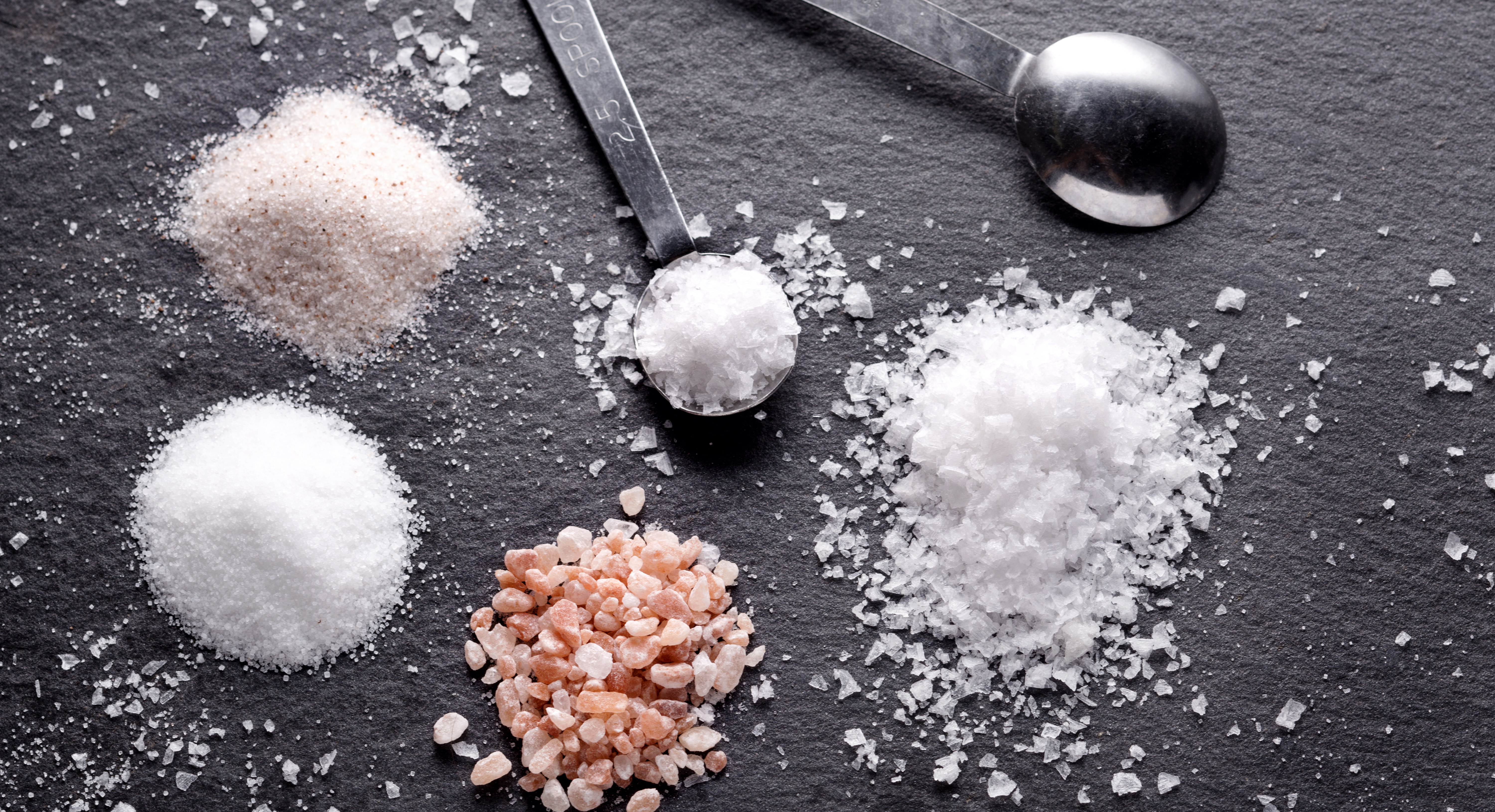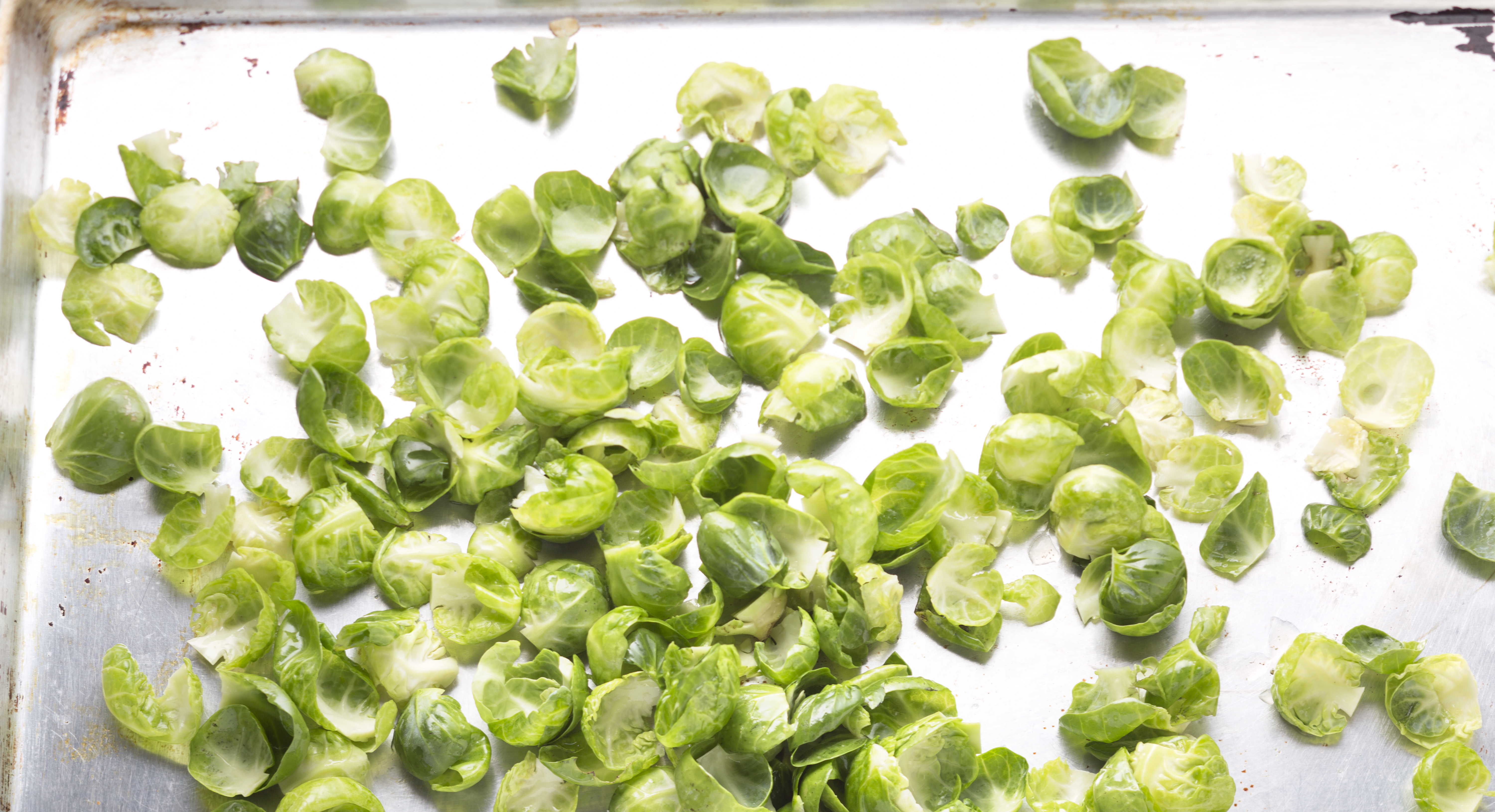Adding a pinch of salt to your favorite dishes isn’t as simple as grabbing the nearest salt shaker. This ingredient is one of the most essential components of any kitchen, and these days there are myriad choices. Do you choose gray salt, Himalayan salt, table salt, or kosher salt? Before you make your pick, it’s helpful to know more about the options. Today we’re taking a closer look at Himalayan salt versus table salt.
What Is Himalayan Salt?

Salt is made up of two minerals: sodium (Na) and chloride (CI). Sea salt is minimally processed and made through a gentle evaporation process, leaving trace minerals and elements intact. This can contribute both to the salt’s overall color as well as its level of coarseness.
When it comes to Himalayan salt, the name offers a big clue to its origins—it’s mined from deposits in the Himalayan mountain range, specifically in the Punjab region of Pakistan. Geologists believe this type of salt was formed more than 500 million years ago, which means it’s one of the oldest minerals around. One of the defining features of Himalayan salt is the light pink color, which is formed due to high amounts of iron oxide found in the salt. When iron oxide reacts with sodium chloride, it results in the pale hue.
Benefits of Himalayan Salt
Himalayan salt is rich in essential nutrients such as potassium, calcium, and magnesium. It also provides a strong flavor when used as a finishing salt. Benefits of Himalayan salt aren’t limited to the kitchen, either—many beauty products include salt, particularly scrubs and exfoliation treatments to gently slough off dead skin.
Himalayan Salt Products
Take your pick from these Himalayan salt pantry staples.
Thrive Market Himalayan Pink Salt
This pink salt comes in an easy-to-use grinder that’s refillable, and offers 84 trace minerals like iron, chloride, and calcium.
Himalania Himalayan Fine Pink Salt
Sourced from the foothills in Pakistan (just a few miles from the world’s tallest mountains), this salt is extra fine and Non-GMO Project Verified.
Himalasalt Organic Garlic Himalayan Sea Salt
Add a dash of flavor to your dishes with a sprinkle of Himalayan sea salt that’s been ground with pungent garlic. It’s free from gluten, GMOs, and additives and perfect on fish, chicken, or grilled veggies.
Thrive Market Organic Ghee With Himalayan Pink Salt
Traditional ghee climbs to new culinary heights with the addition of high-quality, raw salt. Try it on toast or as a flavorful fat in pretty much any dish.
Evolution Salt Co. Himalayan Coarse Bath Salts, Lavender
These lavender-scented bath salts are ideal for a nice, long soak to help you feel more calm and relaxed.
Himalayan Salt Recipes
From nut milk to pork chops, here are a few ways to use Himalayan salt in your everyday cooking.
Walnut Milk
Walnut milk might be the next craze in the non-dairy beverage department. Just soak the nuts overnight, add a pinch of salt, and use a blender to make a rich, frothy drink.
Salted Ghee Cassava Drop Biscuits
These easy and gluten-free drop biscuits use cassava flour as the base, and a scoop of pink himalayan salt ghee for added flavor.
Salt and Vinegar Brussels Sprout Chips
This four-ingredient recipe keeps things simple. Just toss Brussels sprout leaves with EVOO, apple cider vinegar, and pink Himalayan salt for the perfect snack.

Seared Pork Chops With Sage Butter
Season your pork chops with pink Himalayan salt and pepper for the perfect flavor. A drizzle of sage butter doesn’t hurt, either.

What Is Table Salt?
Mined from underground salt deposits, table salt is more heavily processed than its sea salt counterparts. Processing eliminates minerals and usually requires some kind of additive to keep it from clumping (see below). Table salt is also bleached, which is where the bright white color comes from, and made up of roughly 97 to 99 percent sodium chloride. What’s in the other 1 to 3 percent? It can be a few different things.

Table Salt Additives
- Iodine: One of the most common additives is iodine, an element that helps with necessary bodily functions like producing thyroid hormones. Some iodized salt may contain dextrose, a sugar, as a stabilizer.
- Sodium fluoride: When fluoride is added to salt, it’s meant to help prevent tooth decay.
- Folic acid: Folic acid is known for helping prevent neural tube defects and anemia in infants.
- Anti-caking agents: These chemical compounds may be added to salt as a preventative measure to keep the grains from sticking. Common anti-caking agents include calcium carbonate, sodium aluminosilicate, magnesium oxide, tricalcium phosphate, and calcium silicate.
Benefits of Table Salt
Some bakers rely on table salt because of its uniformity, which makes it easy to get precise measurements every time. For people deficient in certain nutrients like folic acid and iodine, table salt can also be a way to get more of them dietarily.